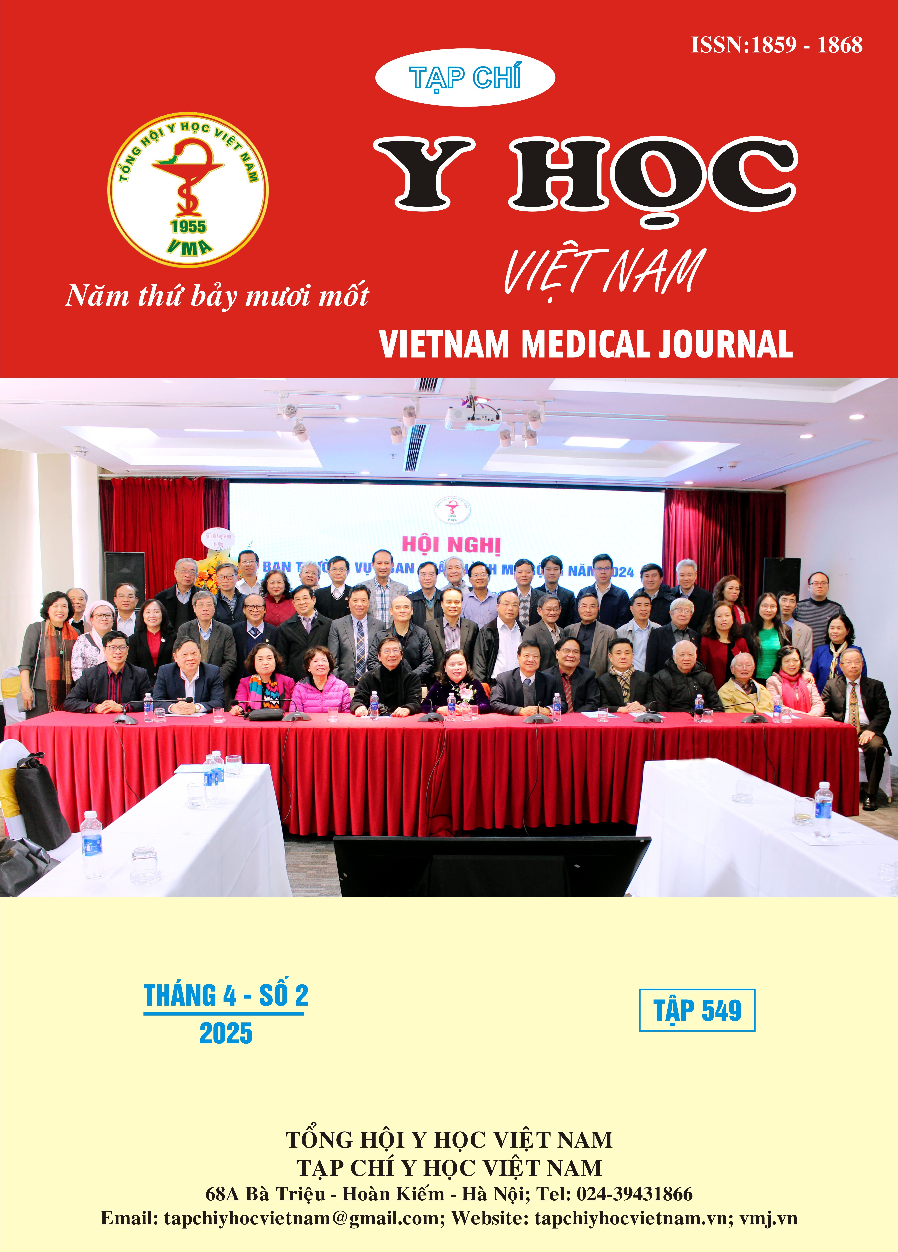PREVALENCE OF ANTIMICROBIAL RESISTANCE OF ESCHERICHIA COLI ISOLATED FROM BLOOD CULTURES AT BAC NINH PROVINCE GENERAL HOSPITAL
Main Article Content
Abstract
Background: Septicemia is a severe acute infection that can lead to multiple organ failure and death. Escherichia coli (E. coli) is currently the leading cause of septicemia; however, treatment is becoming increasingly challenging due to rising antibiotic resistance, particularly in extended-spectrum beta-lactamase (ESBL)-producing and carbapenem-resistant strains. Methods: This cross-sectional study analyzed medical records to assess the antibiotic susceptibility of E. coli strains isolated from bacteremia cases at Bac Ninh General Hospital in 2023. Results: Among 2,308 blood culture samples, E. coli was isolated in 79 cases (3.4%). The distribution was nearly equal between male (50.6%) and female (49.4%) patients, with the highest prevalence observed in individuals aged ≥60 years (73.4%). The majority of isolates were recovered from the Internal Medicine Department (63.3%), while the lowest proportion was found in the Infectious Diseases Department (8.9%). Of the 63 isolates tested for antimicrobial susceptibility, 18 (28.6%) were ESBL producers. High resistance rates were observed for ticarcillin-clavulanate (73.0%), cefixime (71.0%), and ciprofloxacin (69.4%). Carbapenems demonstrated the highest efficacy, with susceptibility rates of 90.9% for imipenem and 96.6% for meropenem. Amikacin (68.3%) and chloramphenicol (76.2%) also exhibited substantial activity against E. coli isolates. Conclusion: E. coli strains causing bacteremia at Bac Ninh province General Hospital exhibit high levels of antibiotic resistance. Carbapenems remain effective treatment options; however, stringent antimicrobial stewardship is essential to curb the spread of resistant strains.
Article Details
Keywords
E. coli, antimicrobial resistance, septicemia, sepsis, Bac Ninh province general hospital
References
2. Phan Văn Hậu, Lê Văn Hưng, Vũ Huy Lượng và cộng sự, Tình hình kháng kháng sinh của một số vi khuẩn gây nhiễm khuẩn huyết tại Bệnh viện E năm 2023. Tạp chí Nghiên cứu y học, 2024. 175(2): p. 118-128.
3. Hoàng Xuân Quảng, Hà Thị Thu Vân, Nguyễn Lê Vân và cộng sự, Đặc điểm phân bố và kháng kháng sinh của Escherichia coli gây nhiễm khuẩn huyết phân lập tại bệnh viện Quân y 103 năm 2023. Tạp chí Y học cộng đồng, 2024. 66(1): p. 204-209.
4. Quế Anh Trâm, Khảo sát mức độ kháng kháng sinh của Escherichia coli gây nhiễm khuẩn huyết được phân lập tại bệnh viện hữu nghị đa khoa Nghệ An (1/2021-12/2021). Tạp chí Truyền nhiễm Việt Nam, 2022. 38(2): p. 14-17.
5. Bộ Y tế, Quyết định 26/QĐ-BYT về việc "Hướng dẫn quy trình kỹ thuật chuyên ngành vi sinh y học". 2014.
6. World Health Organisation (WHO). Sepsis. 2023 [cited 2024 30th Mar]; Available from: https://www.who.int/news-room/fact-sheets/detail/sepsis.
7. Diekema, D.J., P.R. Hsueh, R.E. Mendes, et al., The Microbiology of Bloodstream Infection: 20-Year Trends from the SENTRY Antimicrobial Surveillance Program. Antimicrob Agents Chemother, 2019. 63(7).
8. Li, K., L. Li, J. Wang, Distribution and Antibiotic Resistance Analysis of Blood Culture Pathogens in a Tertiary Care Hospital in China in the Past Four Years. Infect Drug Resist, 2023. 16: p. 5463-5471.


